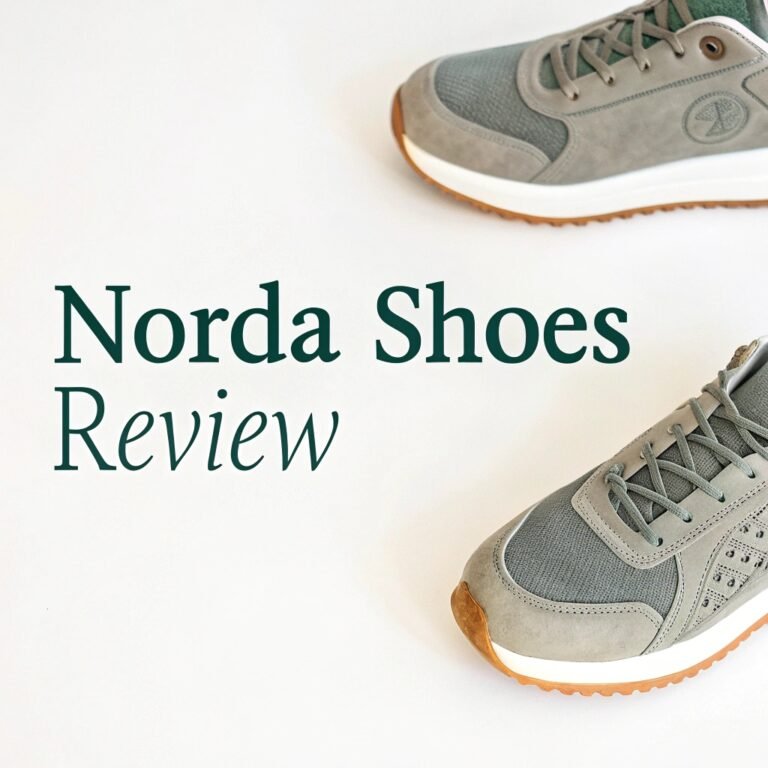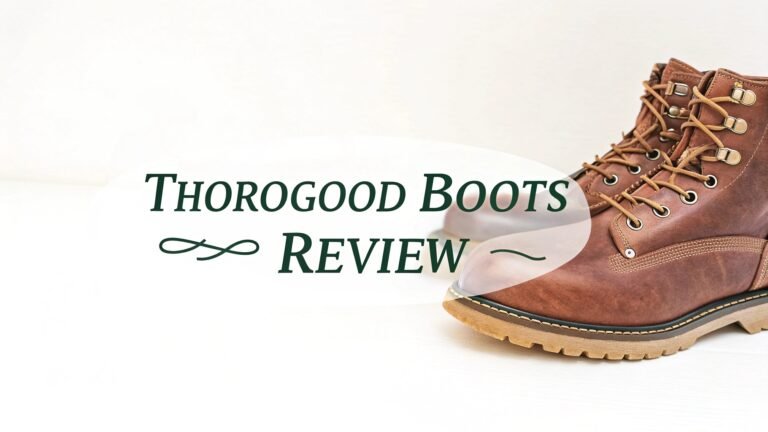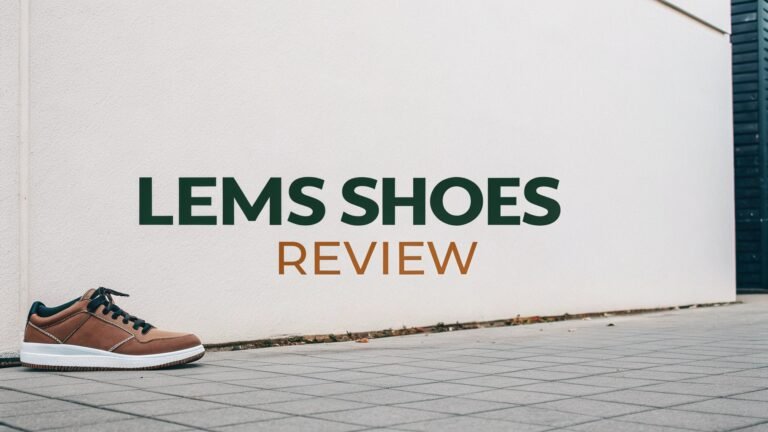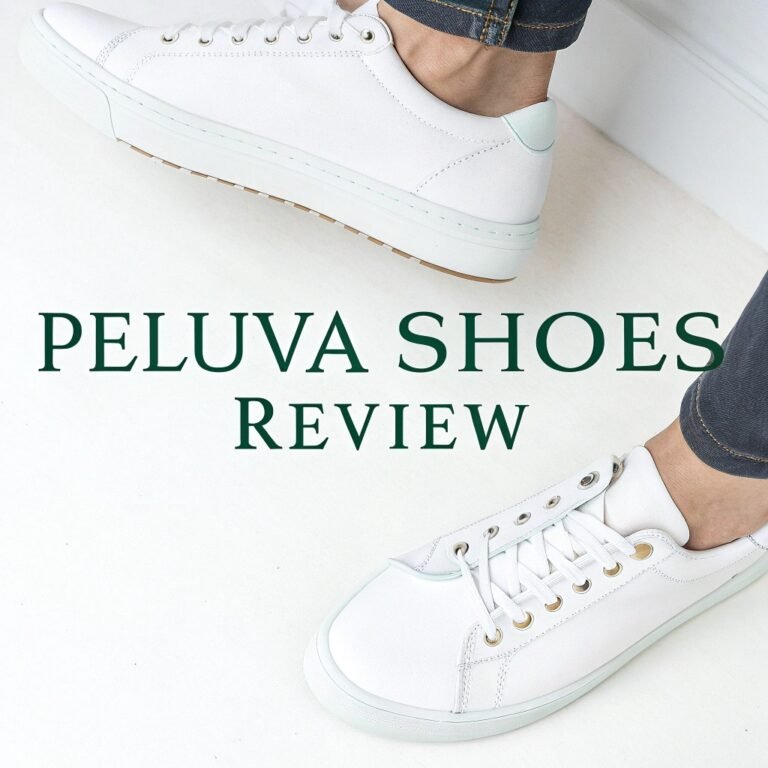Palladium Boots Review: Military Heritage Meets Modern Style
When it comes to footwear that combines style, comfort, and durability, Palladium boots stand tall among competitors.
These iconic canvas boots, with their distinctive rubber toe caps and rugged soles, have traveled from the French Foreign Legion to the feet of urban explorers worldwide.
Palladium has built a reputation for creating boots that are not just functional but also make a fashion statement. With a rich military history and a commitment to quality materials, these boots have earned a loyal following.

Key Takeaways
- Rich Military Heritage: Palladium boots were originally designed in 1947 for the French Foreign Legion as lightweight, quick-drying combat footwear. This military background influences their distinctive rugged design that sets them apart from typical casual shoes.
- Versatile Comfort: Most reviewers agree that Palladium boots deliver exceptional comfort right out of the box, with many models featuring EVA footbeds for all-day wearability. Their canvas construction makes them remarkably lightweight compared to traditional leather boots.
- Style Meets Function: Palladium boots bridge the gap between casual sneakers and tactical boots, making them suitable for both urban environments and light outdoor activities. The iconic rubber toe cap provides protection while adding to their unique aesthetic appeal.
- Canvas Construction: The trademark canvas upper material in classic models like the Pampa Hi offers excellent breathability, making them ideal for warmer weather. However, this material lacks the waterproofing and insulation of more technical boots.
- Varied Waterproofing Options: While the standard canvas models are not waterproof, Palladium offers several waterproof variations with added treatments or alternative materials for wet-weather performance.
- Durability Considerations: The rubber toe cap and lug sole provide good durability, but some users report the canvas can wear through at stress points after extended use. Overall, they offer good value considering their price point.
- Multiple Collections: Palladium offers several distinct collections, including the classic Pampa Hi, lightweight Travel Lite series, and more rugged waterproof models, each designed for different use cases and environments.
- Size Considerations: Many users report that Palladium boots tend to run slightly large, with sizing similar to Converse Chuck Taylors. It’s often recommended to size down half a size from your regular sneaker size.
- Good for Walking: The lightweight construction and comfortable footbed make Palladium boots excellent for all-day city exploring, though they lack the support features of dedicated hiking boots for challenging terrain.
- Reasonable Price Point: Most Palladium boot models are priced between $70-$150, placing them in an accessible mid-range market position compared to premium hiking or work boots.
The Rich History of Palladium Boots
Palladium’s journey didn’t begin with boots at all. The company was established in 1920 in France as a manufacturer of aircraft tires. This expertise in rubber production laid the foundation for what would later become their signature footwear line. When the aviation industry changed after World War II, Palladium pivoted to footwear production.
In 1947, the company created the Pallabrousse boot specifically for the French Foreign Legion. These canvas and rubber boots were designed to be lightweight and quick-drying – essential qualities for soldiers navigating diverse terrains. The Pampa model followed in 1949, quickly becoming their signature style that continues to this day.
What made these boots revolutionary was their unique combination of canvas uppers with rubber soles and toe caps. This design provided the durability needed for military use while maintaining comfort and flexibility. The distinctive rubber toe cap not only offered protection but became part of Palladium’s iconic look.
After serving military needs effectively, Palladium boots transitioned to civilian life. They gained popularity as stylish yet practical footwear for urban explorers and travelers. Today, after more than 75 years since their initial design, Palladium boots remain remarkably similar to their original military specifications – a testament to their timeless design and functionality.
The Iconic Palladium Boot Design
The unmistakable silhouette of Palladium boots sets them apart in a crowded footwear market. At first glance, they might remind you of canvas high-tops like Converse, but a closer look reveals their unique design elements that balance form and function.
The most iconic Palladium model, the Pampa Hi, features a mid-ankle height canvas upper that provides light ankle support without restricting movement. The canvas material gives these boots their characteristic lightweight feel and allows for breathability in warm conditions. Unlike leather boots that need breaking in, the flexible canvas feels comfortable from day one.
What truly distinguishes Palladium boots is the thick rubber toe cap and foxing that wraps around the front and sides of the boot. This rubber element serves a practical purpose – protecting your toes and preventing the canvas from wearing through – while creating the boot’s signature look. The rubber extends to form a substantial lug sole that provides excellent grip on various surfaces.
The lacing system is straightforward with metal eyelets that allow for secure fit adjustments. Many models feature a fabric loop at the heel – a practical detail that makes pulling the boots on easier. Some newer models like the Travel Lite series incorporate modern elements like bungee lacing systems for quick on-off convenience.
Palladium has maintained this core design while introducing variations in materials, colors, and technical features across their product line. This consistent design language means that whether you’re wearing the original canvas Pampa or a waterproof leather version, the Palladium aesthetic remains instantly recognizable.
Comfort and Fit: What to Expect
When purchasing any boots, comfort is a primary concern, and Palladium boots consistently earn high marks in this category. The lightweight canvas construction means you won’t experience the heavy, restrictive feeling common with traditional leather boots. Many users describe wearing Palladiums as feeling more like athletic shoes than boots.
Most Palladium boots feature an EVA footbed that provides cushioning for all-day comfort. The footbed is typically thicker than what you’d find in canvas sneakers like Converse, offering better impact absorption for extended walking. The flexible canvas upper moves naturally with your foot without creating pressure points or blisters that often accompany stiff leather.
Regarding sizing, Palladium boots generally run about half a size large, similar to Converse Chuck Taylors. If you wear a size 10 in standard athletic shoes, you might find a 9.5 in Palladiums provides the best fit. The boots offer a medium width that accommodates most feet, though those with very wide feet might find them slightly narrow.
The ankle portion of Palladium boots provides light support without being restrictive. The canvas conforms to your ankle over time, creating a personalized fit. For those seeking more ankle stability, the higher-top models like the Pampa Hi offer more support than the low-cut versions.
One comfort feature frequently mentioned in reviews is the absence of break-in time. Unlike leather boots that can cause discomfort until they’re properly broken in, Palladium boots tend to feel comfortable from the first wear. This makes them particularly appealing for travel when you don’t want to pack boots that might cause blisters.
Durability: How Long Will They Last?
Durability expectations should align with the boot’s materials and intended use. Palladium boots, while sturdy for their weight class, aren’t designed to withstand the same conditions as heavy-duty work boots. Their canvas construction offers both advantages and limitations when it comes to longevity.
The rubber toe cap and outsole provide excellent durability where boots typically see the most wear. The thick rubber protects the front of the boot from scuffs and abrasions, while the substantial lug sole resists wearing down even with daily use. Many users report the soles maintaining their tread pattern well beyond expectations.
The canvas upper presents more mixed durability results. Canvas is naturally resistant to tears and punctures, making it surprisingly tough for its weight. However, it can show wear more quickly than leather, particularly at flex points and seams. Some users report the canvas developing holes at the flex point above the toe box after 6-12 months of heavy use. This issue appears more common in the standard canvas models than in the waxed canvas or ripstop nylon versions.
The stitching quality generally receives positive reviews, with few reports of seams coming apart under normal use. The metal eyelets for the lacing system typically hold up well without pulling out of the canvas, though the laces themselves may need replacement before any other part of the boot shows significant wear.
For waterproof models, the protective coating or membrane may diminish in effectiveness before the boot itself shows physical wear. This is common with all waterproof breathable footwear and isn’t unique to Palladium.
Considering their mid-range price point (typically $70-150 depending on the model), Palladium boots offer reasonable durability for casual and light outdoor use. Those seeking boots for demanding work environments or challenging terrain would likely be better served by more specialized footwear.
Waterproofing: Staying Dry in Wet Conditions
One common question about Palladium boots concerns their performance in wet conditions. The answer varies significantly depending on the specific model and materials used.
The standard canvas Pampa Hi models are not waterproof. The canvas material will absorb water, eventually allowing moisture to reach your feet. These classic models are best suited for dry conditions or light, brief exposure to moisture. Some owners apply aftermarket waterproofing sprays to their canvas Palladiums with mixed results – these treatments can provide some water resistance but won’t make them fully waterproof.
For those needing protection from wet conditions, Palladium offers several dedicated waterproof models. The Pampa Sport Cuff Waterproof features treated leather uppers with waterproof seams, providing significant protection from rain and puddles. The Pampa Travel Lite+ Waterproof uses lightweight materials with waterproof treatment, offering wet-weather protection without the heavy feel of traditional waterproof boots.
The waterproof models use various technologies to achieve their water resistance. Some utilize waterproof membranes similar to Gore-Tex, creating a barrier that prevents water entry while allowing some breathability. Others rely on treated materials and sealed seams without a separate membrane layer.
User reviews of the waterproof models generally report good performance in light to moderate rain. The boots can handle walking through wet grass or shallow puddles without leaking. However, like most waterproof casual footwear, they aren’t designed for submersion or extended exposure to heavy downpours.
As with all waterproof footwear, the water-resistant properties will diminish over time with wear and exposure to dirt and oils. Regular cleaning and occasional reapplication of waterproofing treatments can help maintain the boots’ ability to repel water.
Popular Palladium Boot Models Explained
Palladium offers several distinct boot models, each with its own characteristics and best uses. Understanding the differences can help you select the right pair for your needs.
The Pampa Hi is Palladium’s flagship model and most recognizable design. It features a mid-ankle height canvas upper, rubber toe cap, and substantial lug sole. This classic model offers good comfort for all-day wear and enough support for light hiking. The standard Pampa Hi is not waterproof but comes in an extensive range of colors and materials, including canvas, leather, and waxed versions.
For those seeking something lighter, the Pampa Travel Lite series focuses on reducing weight for travelers and those on their feet all day. These models feature lightweight materials like ripstop nylon and specialized Eva outsoles that maintain grip while cutting weight. Many Travel Lite boots include a bungee lacing system for quick on/off convenience. The Travel Lite+ Waterproof adds water resistance to this lightweight package.
The Pampa Sport collection offers a slightly more rugged take on the classic design, with reinforced construction and often leather or suede uppers instead of canvas. The Sport Cuff Waterproof variant adds a padded collar and waterproof construction for wet conditions.
For cold-weather use, the Pampa Hi Cuff WPN provides insulation and waterproofing, making it suitable for winter conditions. These models typically feature thermal lining and water-resistant uppers to keep feet warm and dry.
The Pallabrousse model stays closest to the original military design from 1947, with a more structured silhouette and rugged construction. This model often appeals to those seeking the most authentic military-inspired look.
Newer collections like the Pallaphoenix offer a more modern take on Palladium’s design language, with sleeker profiles and contemporary materials while maintaining the brand’s distinctive aesthetic.
Comfort for Walking and Light Hiking
Many Palladium owners cite comfort during extended walking as one of the boots’ strongest attributes. But how do they perform specifically for walking and light hiking compared to dedicated outdoor footwear?
For urban exploration and city walking, Palladium boots excel due to their lightweight construction and flexible uppers. The canvas breaks in quickly and moves naturally with your foot, reducing fatigue compared to stiffer boots. The EVA footbed provides adequate cushioning for concrete sidewalks, though some users add aftermarket insoles for additional support during very long days of walking.
The substantial lug sole offers good traction on various city surfaces, including wet sidewalks and light gravel paths. The grip is particularly appreciated on painted crosswalks or metal surfaces that can be slippery with other footwear.
For light hiking on established trails, Palladiums perform better than standard sneakers but fall short of dedicated hiking boots. The ankle height provides some stability on uneven ground, and the rubber toe cap offers protection from rocks and roots. However, they lack the arch support and ankle stabilization found in purpose-built hiking footwear.
Users report mixed experiences on more challenging terrain. The boots handle dry, packed trails reasonably well but may not provide enough support or protection for rocky or technical trails. The canvas upper offers little protection from brush or trail hazards compared to leather hiking boots.
For those seeking a single pair of boots for both urban environments and occasional nature walks, Palladiums strike a good balance. They’re stylish enough for city use while providing more functionality on light trails than fashion sneakers would offer. However, frequent hikers or those tackling challenging terrain would likely benefit from dedicated hiking footwear.
The Travel Lite models receive particularly positive feedback for all-day comfort. The reduced weight minimizes fatigue during extended walking, making them popular choices for travelers who spend long days exploring new cities on foot.
Style and Versatility: From City Streets to Light Trails
Palladium boots occupy a unique stylistic niche between athletic shoes and traditional boots. This hybrid nature contributes significantly to their popularity, as they can seamlessly transition between various settings and outfits.
The military heritage is evident in the boots’ utilitarian design, but Palladium has successfully modernized this aesthetic for contemporary fashion. The result is footwear that looks purposeful and practical rather than costumey or overtly tactical.
In urban settings, Palladiums pair well with a wide range of casual outfits. They work with jeans, chinos, and shorts, making them versatile for year-round wear. The boots have found particular favor in streetwear and casual fashion communities, where their distinctive silhouette adds character to outfits. The wide range of available colors allows for both subtle and statement-making options.
For travel and light outdoor activities, Palladiums offer a practical advantage: they don’t look like typical hiking boots. This means you can wear them sightseeing in European cities and then take a light hike on nearby trails without needing to pack multiple pairs of footwear. They’re less conspicuously “touristy” than obvious hiking boots but more capable than fashion sneakers.
The boots have also found a following in the tech wear and urban utility fashion niches, where practical features and military-inspired aesthetics are valued. The waterproof models particularly appeal to this segment, combining functional performance with the right aesthetic.
Celebrities and influencers have been spotted wearing Palladiums, contributing to their style credibility. The boots have appeared in street style photography and fashion editorials, cementing their position as fashion-forward footwear rather than purely functional boots.
While fashion trends come and go, Palladium’s core designs have remained relatively unchanged for decades, suggesting a timeless quality that transcends seasonal fads. This longevity makes them a safer investment for those concerned about their purchases quickly looking dated.
Palladium vs. Competitors: How Do They Compare?
When evaluating Palladium boots, it’s helpful to understand how they stack up against similar footwear from other brands. Several competitors offer products in similar niches, each with their own strengths and weaknesses.
Palladium vs. Converse: This is perhaps the most common comparison, as both feature canvas uppers and rubber toe caps. Palladium boots generally offer more cushioning and arch support than standard Converse Chuck Taylors. The thicker Palladium sole provides better traction and impact absorption than Converse’s flat sole. Palladiums typically run about half a size large, similar to Converse. For those seeking the canvas high-top aesthetic with more comfort for extended walking, Palladiums represent a compelling alternative to Converse.
Palladium vs. Doc Martens: While both have military and workwear heritage, they differ significantly in construction and feel. Doc Martens are heavier with leather uppers and require breaking in, while Palladiums are lightweight and comfortable immediately. Docs offer more substantial construction but at the cost of added weight and initial stiffness. Palladiums are more breathable for warm weather, while Docs provide better protection in cold or wet conditions.
Palladium vs. Timberland: Timberland’s casual boots typically feature leather construction and more substantial waterproofing than standard Palladiums. Timberlands tend to be heavier but offer more protection in harsh conditions. Palladiums win for lightweight comfort and breathability, while Timberlands excel in durability and weather protection. The aesthetic is also quite different, with Timberlands projecting a more rugged outdoor image.
Palladium vs. Military Surplus Boots: Actual military boots typically offer more durability and protection but with significantly more weight and break-in time required. Palladiums provide the military-inspired aesthetic with much more immediate comfort. For casual wear, Palladiums are generally preferable, while actual tactical boots would be better for demanding conditions.
Palladium vs. Vans Sk8-Hi: Both offer canvas high-top designs, but Palladiums feature more substantial soles with better traction. Vans have a more skate-oriented aesthetic, while Palladiums lean into their military heritage. Palladiums generally provide better support for extended walking, though Vans may offer more board feel for skateboarding.
For most casual users seeking comfort, style, and light functionality, Palladiums often represent a good middle ground – not as fashion-focused as pure sneakers but not as heavy or specialized as dedicated work or hiking boots.
Care and Maintenance Tips
Proper care can significantly extend the life of your Palladium boots and maintain their appearance. The specific maintenance needs vary depending on the material of your particular model.
For canvas Palladiums, regular cleaning with mild soap and water will remove dirt and prevent staining. Allow them to air dry naturally away from direct heat sources, which can damage the canvas and rubber. Stuffing them with newspaper while drying helps maintain their shape and speeds up the drying process.
Waterproof models benefit from periodic reapplication of water-repellent spray designed for footwear. This maintains their water resistance as the original treatment diminishes with wear. Before applying any waterproofing treatment, clean the boots thoroughly and allow them to dry completely.
The rubber components (toe cap and sole) can be cleaned with a damp cloth to remove dirt and maintain their appearance. For stubborn marks on the rubber, a pencil eraser often works well without damaging the material.
Leather Palladiums require different care than canvas models. Use leather cleaner and conditioner appropriate for the specific type of leather. Water-resistant leather benefits from occasional application of wax-based protectants to maintain its water-repellent properties.
The insoles can develop odors with extended wear, particularly in warm weather. Many Palladium insoles are removable, allowing you to wash them separately or replace them when worn out. Allowing the boots to air out between wearings helps prevent odor buildup.
Laces often show wear before the boots themselves. Keeping a spare pair on hand prevents being caught unprepared when they eventually break. Standard 45-inch boot laces work well for most Palladium models.
For long-term storage, clean the boots thoroughly and store them in a cool, dry place away from direct sunlight, which can fade colors over time. Avoid storing them in plastic bags, which can trap moisture and lead to mildew. Breathable cloth bags or shoe boxes work better for long-term storage.
With proper care, Palladium boots can maintain their appearance and functionality for several years of regular use, making them a good value for their price point.
Frequently Asked Questions
Are Palladium boots true to size?
Most Palladium boots run approximately half a size large. If you typically wear a 10 in athletic shoes, a 9.5 in Palladiums will likely provide the best fit. They’re similar to Converse Chuck Taylors in their sizing.
Are Palladium boots good for wide feet?
Palladium boots offer a medium width that accommodates average to slightly wide feet. Very wide feet may find them somewhat narrow, especially in the toe box. The canvas models do stretch slightly with wear, conforming to your foot shape.
Can I wear Palladium boots in winter?
Standard canvas Palladiums are not ideal for winter conditions as they lack insulation and waterproofing. However, Palladium offers insulated, waterproof models specifically designed for cold weather, such as the Pampa Hi Cuff WPN.
How do I clean my Palladium boots?
For canvas models, use mild soap and water with a soft brush to remove dirt. Rinse thoroughly and air dry away from direct heat. Waterproof models benefit from periodic reapplication of water-repellent spray after cleaning.
Are Palladium boots good for hiking?
Palladium boots are suitable for light hiking on established trails. They offer better traction and protection than sneakers but lack the support and durability of dedicated hiking boots. For serious trails or backpacking, specialized hiking footwear is recommended.
How long do Palladium boots last?
With regular wear, expect 1-2 years of good service from canvas Palladiums before they may show significant wear at flex points. The soles typically outlast the canvas uppers. Leather models and those with reinforced construction tend to last longer.
Are Palladium boots waterproof?
Standard canvas Palladium boots are not waterproof. However, Palladium offers specific waterproof models that use treated materials and sealed seams to keep feet dry in wet conditions. Look for models with “Waterproof” or “WP” in their name.
Where are Palladium boots made?
Originally manufactured in France, Palladium boots are now primarily produced in Vietnam, China, and other Asian countries. The company maintains design control while outsourcing manufacturing to maintain competitive pricing.

Mia Smith is the founder of Shoe Storyteller, a blog that celebrates the art and stories behind shoes. With a passion for fashion and a flair for storytelling, Mia brings a unique perspective to the world of footwear.







